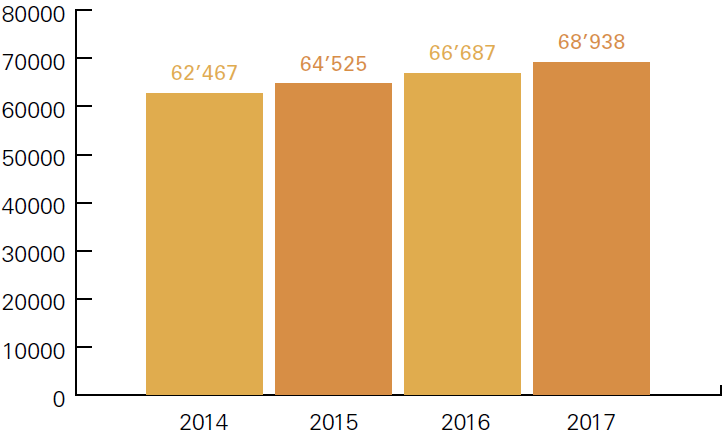The overload of adult emergency departments is a common occurrence in urban areas throughout the Western world. Several factors contribute to this, notably our growing and ageing population, as well as the vulnerability and fragility of certain sectors of society. As a result, the number of consultations in the HUG ER continues to increase. Between 2014 and 2017, the number of adult emergency room admissions increased from 62,467 to 68,938, a rise of 10.4%.
Constant improvement of monitoring conditions during waiting times
The new organization of the emergency department now involves the availability of a medical officer for reception and triage until 9pm each day. This head of clinic can quickly administer first aid as well as re-assessing patients at regular intervals to detect any situations that could potentially deteriorate. He or she reassures the patient, improves basic care, manages pain relief, and handles the safety and conditions of the wait.
In addition, since the end of 2016, outpatient appointments are now available 24 hours a day (and no longer until 10.30 pm) to take care of less serious cases - around 25 to 40 patients between 10.30 pm and 7 am. This means patients have less time to wait, and it takes the load off the ER, which until now was having to treat these cases as well as handling more serious emergencies
The emergency department has also put in place other measures:
- faster registration and triage by a nurse
- 24-hour hospitalization in GIM so that patients seen in the ER - even in the middle of the night - can be admitted to a room on one of the floors
- creation of an office for direct admission by the community physician, without going through the ER,
- opening of a SMUR base on the right bank
- opening of geriatric emergencies at the Trois-Chêne Hospital.
Number of adult emergency room visits
